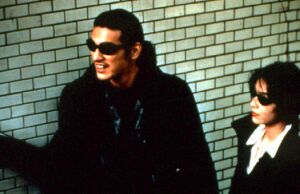


Tokyo Metropolitan Route 305 ( Meiji-Dōri ( 明治通り), on the east).After several large hotels opened in the district, the Kabukicho Concierge Association was formed to recommend businesses that would be safe for foreign patrons, as the area is notorious for the practice known as bottakuri, where some businesses add exorbitant hidden fees to bring the final bill well beyond the initial advertised prices. Recently, tourism from China and Korea is on the rise, and so, many tourists can be seen in Kabukichō even during daytime.
The sleepless town windows#
Although referred here as a "red light district", there are no red lights in the literal sense with prostitutes in the windows as in Amsterdam. Īt present, the 36 ha (89 acres 0.14 sq mi) Kabukichō district has transformed from a residential area to a world-famous red-light district housing over three thousand bars, nightclubs, love hotels, massage parlours, hostess clubs and the like. Kabukichō leaders attributed the change in enforcement to Tokyo Governor Shintaro Ishihara and the Tokyo bid for the 2016 Summer Olympics. However, starting in 2003, joint citizen and police patrols began enforcing business licensing, and the 1948 Businesses Affecting Public Morals Regulation Act was more strictly enforced as well starting in April 2004, forcing adult-themed businesses to start removing customers at midnight in preparation to close by 1 AM. īy 1999, the area had been named "Asia's largest adult entertainment district", and tabloids were regularly running candid photographs of drunken Kabukichō patrons fighting and being arrested. In 1971, Takeshi Aida, a former mattress salesman, opened "Club Ai", the first host club in Kabukichō at its peak, Aida's company reported ¥2.7 billion in annual revenue. Katsumi had apprenticed to a portrait studio in Tokyo shortly after moving there in 1962 he took his street photography portraits at night using a strobe as a side job.

Watanabe Katsumi, a freelance portrait photographer who took pictures and sold prints back to his subjects for a modest ¥200, documented the citizens of Kabukichō during this transition period in the 1960s and 1970s. The rise of home video entertainment decreased the demand for live performances and film theaters, and Kabukichō became home to a number of video arcades, discos, and fuzoku (businesses offering sexual services). In 2002, it was estimated that 70% of the land in Kabukichō was owned by foreign-born Japanese residents and their descendants.

The "three most renowned overseas Chinese of Kabukicho" include the founder of Humax, Lin Yi-wen, who started his business with a cabaret Lin Tsai-wang, who built the Fūrin Kaikan and Lee Ho-chu, owner of the Tokyo Hotel Chinese restaurant. Kabuki-chō was quickly redeveloped after the war, mainly due to the efforts of the overseas Chinese in Japan who bought land left unused after the expos and greatly developed them.
The sleepless town movie#
The Tokyu Cultural Hall (to the south, in Shibuya), Tokyu Milano-za movie theater, Tokyo Ice Skating Rink, and Shinjuku Koma Theater were all completed in 1956, cementing the area's reputation as an entertainment center. Although the theatre was cancelled due to financial problems, the name remained. As a result, Hideaki Ishikawa, a regional planner, dubbed the town Kabuki-chō, which was adopted on April 1, 1948. After the war, Kihei Suzuki from the Association of Readjustment and Reconstruction of Shinjuku worked with the major landowner, Mohei Minejima to draw up plans for Kiku-za, a kabuki theatre, in the area they believed that performers from the Kabuki-za theatre in Ginza would accept their invitation to perform at Kiku-za. ĭuring the war, a bombing raid on April 13, 1945, razed the area to the ground. Prior to World War II, the district was one of the areas open to foreign-born property owners (primarily from Taiwan and Korea), who mainly operated tsurekomi yado, predecessors to today's love hotels. In 1920, a girls' school was built there, and the surroundings were developed into a residential area. As the Yodobashi Purification Plant was built in 1893, the ponds were filled in. After the Meiji Period, the area became a duck sanctuary. Originally, the area was known as Tsunohazu ( 角筈) and was a swamp.


 0 kommentar(er)
0 kommentar(er)
